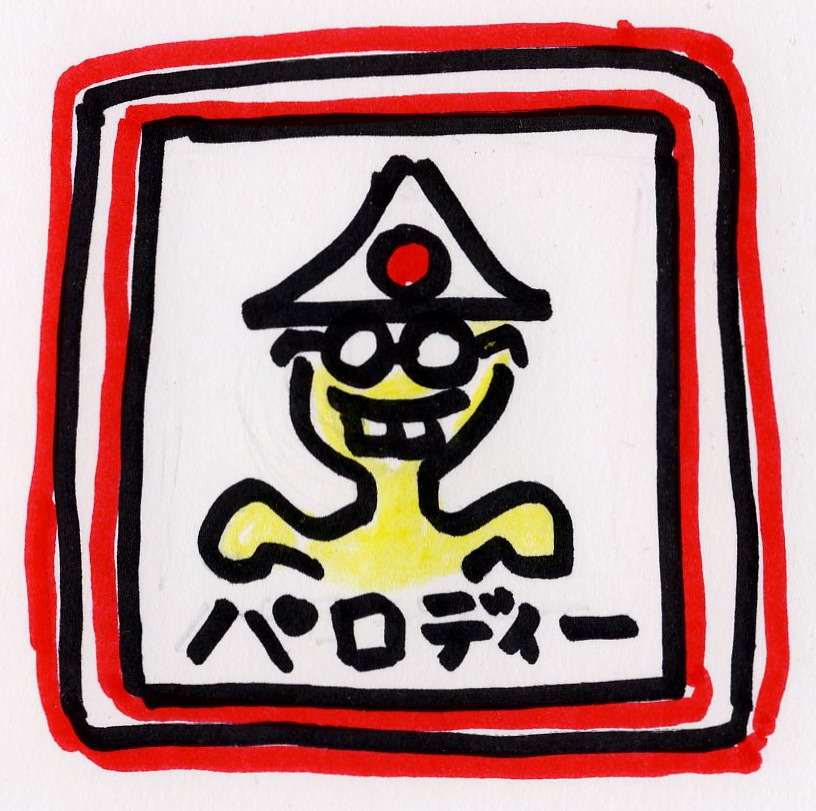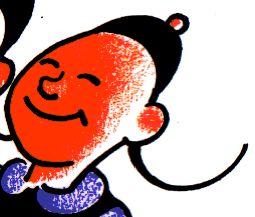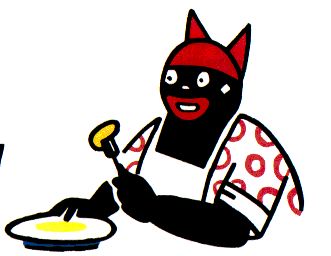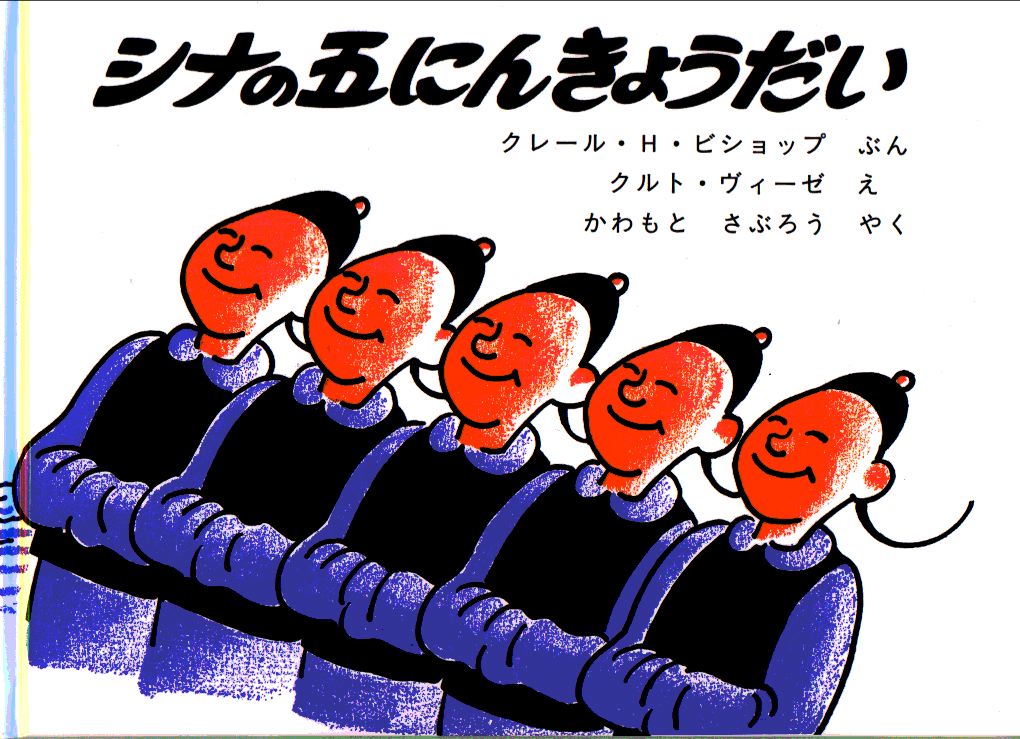www.debito.org


ちびくろ・さんぼ(瑞雲舎 出版)抜粋
Zuiunsha's 2005 republication of "Little Black Sambo", Japanese version,
excerpted text and illustrations
この昔話が21世紀の日本で甦るなんて
これから子供に「さんぼ」と呼ばれる日本在住の黒人、シナと呼ばれる中国人はどう感じるのでしょうか。
 この本は何が問題ですか?同様に日本人が「サンボ化」されたパロディーを見て考えましょう。
この本は何が問題ですか?同様に日本人が「サンボ化」されたパロディーを見て考えましょう。
このような本は好きですか。じゃあ「シナの五にんきょうだい」も同出版者に好評発売中!
出版者 瑞雲舎へコメントをどうぞ
社長の電子メールアドレスはinoue@zuiunsya.com
(Zuiunsha's also publishing "The Five Chinese Brothers",
another anachronistic view of a foreign land that should stay a historical relic.
Is it any wonder why China views Japan with mistrust?)
ONLINE PETITION (署名運動)YOU CAN SIGN PROTESTING
THE PUBLICATION AT http://www.petitiononline.com/4NoSambo
Author of the petition contactable at protestchibikurosambo@yahoo.com
WHAT'S THE ISSUE? Click to go to:
ENGLISH SECTION OF THIS
WEBSITE
WITH ARTICLES AND COMMENTARY
Highlights of the Japanese version of Little Black Sambo, entitled
"Chibi Kuro Sanbo":



EXCERPTS OF THE STORY FOLLOW








読んだが、何が問題かはピンとこない、と言う方には、変わりに日本人がサンボ化されたパロディーをご覧下さい。
「『ちびくろ・さんぼ出版反対』署名運動のウェブサイト」
Happy with what you've just seen? If not, sign
an online petition against the publication of this book by clicking here.
Author of the petition contactable here
出版者 瑞雲舎へコメントをどうぞ
社長の電子メールアドレスはinoue@zuiunsya.com
読んだが、何が問題かはピンとこない場合、変わりに日本人がサンボ化されたパロディーをご覧下さい。

出版者 瑞雲舎へコメントをどうぞ
社長の電子メールアドレスはinoue@zuiunsya.com
パロディーセクション
PARODY OF "CHIBI KURO SANBO" (LITTLE BLACK SAMBO), FOR
WHAT IT'S WORTH
TO PUT THE SHOE ON THE OTHER FOOT
"CHIBI KIIRO
JAPPU" ("LITTLE YELLOW JAP")
(English Translation and commentary below each drawing)

(SEE ORIGINAL オリジナルをご覧下さい)
TRANSLATION: The Title reads "Chibi Kuro Jappu" (Little Yellow Jap),
with subtitle "A parody of Zuiunsha's 'Chibi Kuro Sanbo'" (Little Black
Sambo). The Japanese at the bottom reads, "What if your race was depicted in
the same way as this book?" This is to make it crystal clear to the audience
that this is a parody of a racist book, with the intention of pointing out the inherent
racism via comparison and contrast.
Note the snow monkeys (instead of tigers), the stilted sandals, the Vietnamese chapeau
(all Western conflations of "Asianness") the Japanese-style umbrella the
fundoshi instead of underpants, and the fact that you cannot see any distinguishing
features (such as fingers) due to the overemphasis on skin color (as happened in
ink-black Sambo on the original cover). Of course, you have to include the long-standing
historical "Japanese stereotypical characteristics" (buck teeth and glasses),
which would from long ago be shouted into oblivion overseas.

(SEE ORIGINAL オリジナルをご覧下さい)
TRANSLATION: "In a land far, far away lived a cute little boy. His name
was Little Yellow Jap. He wore interesting clothes. Why? Because the author of this
book was completely ignorant about his country."
Note the establishing character picture, with Japanese-style X-ed potbelly. The text
in fine print, included on all pages, directs the reader back to what page in the
original this is lampooning.

(SEE ORIGINAL オリジナルをご覧下さい)
TRANSLATION: "When Little Yellow Jap was strolling through the mountains
one day, out came a snow monkey taking a bath in a hot springs. 'Hey,' the monkey
cried, 'I like Chinese food. So I'll eat you.' Jap exchanged his overcoat for his
life."
Note the long sleeves--another Asian stereotype of Asians walking around in hand-tuckable
long sleeves or pajamas in public.

(SEE ORIGINAL オリジナルをご覧下さい)
TRANSLATION: "To make a long story short, a criminal gang of snow monkeys
took away all of Jap's clothes. Before long, all the monkeys began fighting amongst
themselves, saying, 'I'm the one who looks sharpest in these duds!'"
Note that the monkeys have transformed into a) a salaryman with a briefcase, 2) a
fashion maven with a cellphone, and 3) a beer-guzzling layabout reading the racehorse
news. Chibi, back in his undies (again, with no fingers), stands not next to a palm
tree, but to a Japanese bonsai. The scream (growls in the original) which stretches
across the page is "Gyooooo---!", a traditional yell (like a yodel) in
traditional Japanese performing arts.

(SEE ORIGINAL オリジナルをご覧下さい)
TRANSLATION: "For some inexplicable reason, the monkeys melted into miso
bean paste after the fight. Little Yellow Jap's father, Jumbo, brought a pot and
took it home."
Note the tree the monkeys melted around is again a bonsai.

(SEE ORIGINAL オリジナルをご覧下さい)
TRANSLATION: "And Chibi's mother, Baabaanbo [old crone-nbo] made "miso
katsu" [fried pork cutlet and miso--a Nagoya delicacy]"
Note the obvious, that papa "Jumbo" matches his name as a sumo wrestler,
his belly band the same color as Jumbo's in the original (although drawn in ukiyoe
style). Scary and world-weary "Baabaanbo", bedecked in anime apron, in
bunny slippers with those sandal platforms, and toting a brand-name handbag, is indifferent
to the huge pot of miso, and asks for her husband's wallet instead. All of course
have the buck teeth and glasses.

(SEE ORIGINAL オリジナルをご覧下さい)
TRANSLATION: "Baabaanbo, on a diet, eats sparingly. 'You got a problem
with that?', she says. Jumbo eats a huge amount. Little Yellow Jap eats nothing,
due to yase gaman [a samurai ethic of proud self-denial]."
Note that again, Chibi's hands are too short to come out of the sleeves--again, the
belittling tendencies found in protested images of Asians by the West.

TRANSLATION: THE MORAL OF THIS TALE: "SAMBO IS NOT MERELY A PERSON'S
NAME."
"How was this little tale? Did you laugh at this parody? The point is, this
book treats its subject, black people, in an uncharitable way. Published in 1899,
this book is inappropriate for this day and age."

TRANSLATION: "Put the shoe on the other foot: If these things were though
and said about Japanese, how would you feel? So is it okay for people of African
descent who live in Japan, as well as their children in international marriages with
Japanese, to be called "Sambo" like this?
Note that in the bottom drawing, the children are thinking a "dakko-chan"
(a banned inflatable gollywog doll) image, a "blackie". One right comes
out and says "Sanbo" aloud, which you know is just going to happen given
how cavalier Japanese children can be with crying out "gaijin" whenever
somebody non-Asian is within view.

TRANSLATION: "The words 'JAP' and 'SAMBO' are comparable words, and discriminatory
langauge. Let's refrain from words which encourage this kind of discrimination. 'Chibi
Kuro Sanbo' as a book is unsuitable for a multiculturalizing Japanese society."
PARODY ENDS
LET'S HOPE IT GETS THE POINT ACROSS.
ENGLISH SECTION OF
THIS WEBSITE
WITH ARTICLES AND COMMENTARY
LA TIMES/CHICAGO TRIBUNE'S NOVEL TAKE ON JAPAN'S PREVIOUS LITTLE BLACK SAMBO BAN:
BLAME THE AMERICANS FOR BULLYING INNOCENT JAPANESE
-------------ARTICLE BEGINS-----------------------------------
"Sambo" returns to bookracks in Japan
By Bruce Wallace
Tribune newspapers: Los Angeles Times
Published in the Chicago Tribune June 13, 2005
http://www.chicagotribune.com/news/nationworld/chi-0506130157jun13,1,474806.story?coll=chi-newsnationworld-hed&ctrack=1&cset=true
TOKYO -- A writer's death can do wonders for pushing that back catalog. Less
drastically, a few books acquire cachet by getting banned.
Which may help explain why a reissue of "Little Black Sambo," a turn-of-the-20th
Century illustrated children's book with a reputation for racism, is back on the
best-seller lists in Japan.
"Sambo" was a big favorite of Japanese families from the time it was introduced
here in 1953 until it was yanked from bookstores in 1988 after a swift and effective
anti-racism campaign. The rap against it in Japan echoed that in the West years earlier:
Sambo was a long-standing racist term for American blacks, and illustrator Frank
Dobias' portrayal of the main character, with his bulging white eyes and exaggerated
lips, was deeply offensive.
In April, Zuiunsha, a small Tokyo publisher, bet there was still a market for a book
that had charmed Japanese youngsters who as adults were unable to find it for their
children.
The market agreed. Zuiunsha reportedly has sold 95,000 copies in two months since
offering "Chibikuro Sambo." Despite being a child's read at a thin 16 pages,
"Sambo" is among the top five adult fiction best sellers at major Tokyo
book chains.
"Some people buy it out of nostalgia," explained Tomio Inoue, Zuiunsha's
president, who in picking up the rights gambled he wouldn't face a backlash for breaking
the informal ban.
So far, "Sambo" has returned to shelves with few objections in a country
where blacks are rare. There has been one complaint published in an English-language
newspaper, written by a black resident in Japan. An online petition against the publisher
garnered 262 signatures.
That is a far cry from 1988, when a mostly American campaign drove the book off Japanese
shelves.
At that time, Japan's go-go economy was perceived to be a threat to the United States.
Japanese leaders feared the book was adding a culture war to the trade disputes.
Kazuo Mori, a psychologist at Shinshu University in Nagano, said most Japanese were
surprised to learn that "Little Black Sambo" had racist overtones.
"It never occurred to us," he said. "It was just a story."
The original "Little Black Sambo" was published in 1899. Written by Helen
Bannerman, a Scot living in India, it recounts the adventure of a supposedly Indian
boy who is stalked by tigers and bargains for his life by surrendering his fine clothes.
But the tigers fight over who is the grandest among them, pursuing each other in
frenzied circles until they dissolve into butter.
To its defenders, Sambo is heroic, and the story is a harmless fantasy.
"The Japanese people can be racist when it comes to Koreans living here,"
Mori said. "But racist against blacks?
"We have no experience in dealing with black people. Where would we get it from?"
Copyright ゥ 2005, Chicago Tribune
-------------ARTICLE ENDS-----------------------------------
COMMENT FROM ARUDOU DEBITO: Interesting tack the article
takes. It begs the question of whether or not black people actually live in Japan
(they do), and, rare or not, whether or not their feelings count for anything (they
should). As residents of Japan, regardless of numbers, people of African descent
(not to mention their international children, many of whom are Japanese anyway) should
not have to endure offensive terms such as "Sambo" just because they happened
to be born with darker skin. Although not explicitly stated in the article, the undercurrent
is incorrect: black people are not merely "guests" in this society which
have to tolerate anything their "hosts" do.
Yet with books like LBS, these anachronistic images of "jet
blacks and gollywogs" are being instilled at the elementary school level. The
issue here is not "excuse the innocent Japanese for their sins due to the rarity
of domestic races", but rather "empathize with your neighbors--because
that's what they are--even if they are people of differences; especially in the media".
Take the argument made to its logical outcome: Do a lot of
people have to be offended before something becomes offensive? What is the threshold
that would satisfy the reporter? Little Black Sambo as a book and as an image has
a long historical record of being offensive, worldwide--doesn't that count? Oh, but
claiming that apparently would be bullying Japan, now, wouldn't it? In the grand
tradition of hypersensitive American campaigners utilizing US-Japan trade frictions.
Nothing like geopolitics to confuse victim status.
So now I guess it's okay to bring back the old inflatable "gollywog
hugging dolls" (dakko-chan) that were hanging on people's arms in Japan until
the mid-1980's--with grass skirts, agape eyes, inner-tube lips, and huge Numidian-cook
earrings. Photo of one at:
http://mono-gatari.com/dakko.htm
Yet Dakko-chans exist now, in a different, more modern incarnation.
See
http://www.takaratoys.co.jp/dakko/kawari.html
Clearly things can evolve into much milder forms suitable for
a modern, multicultural society, where you can keep the cute without pandering to
racist stereotype.
Even Little Black Sambo itself overseas has evolved overseas
into a milder version entitled "Sam and the Tigers". There was no need
for Zuiunsha to rejuvenate the book in this form. Or to do the same to Chinese by
republishing 1938's "Five Chinese Brothers" (Shina no go-nin kyoudai--using
the offensive term "Shina", with slanted-eyed coolies in pigtail and hand-tucked
sleeves.) See cover at:
http://www.debito.org/chibikurosanbo.html#shina
How about developing a tack like this in the article, instead
of merely exonerating a whole society's incipient racial stereotyping due to presumed
innocence and geopolitics?
One last thing: the article's tack towards the petition. I
too signed it--signature 263--yet the insinuation is that the number of people protesting,
black or not, is insignificant or inconsequential. Add to the petition yourself if
you like at
http://www.petitiononline.com/4NoSambo
Maybe that will make it newsworthy and the book qualify as
offensive.
Again, see the book for yourself and decide whether or not
the images encourage racial stereotyping:
http://www.debito.org/chibikurosanbo.html
Time for me to get my pens out and draw. "Chibi Kiiro Jappu". I'm serious.
Time to put the shoe on the other foot.
Arudou Debito in Sapporo
debito@debito.org
http://www.debito.org
June 14, 2005
Japanese publisher defies Little Black Sambo
protest
Justin McCurry in Tokyo
Wednesday June 15, 2005
The Guardian
http://www.guardian.co.uk/international/story/0,,1506481,00.html#article_continue
Seventeen years after it was removed from bookshops for its racist content, the children's
story Little Black Sambo
has made a comeback in Japan.
The tale of Sambo, a boy who uses his wits to survive after being stalked by tigers,
was a hit in Japan when it was first published here in 1953.
In 1988, Japanese booksellers agreed to remove it from their shelves after a US-led
campaign against its racist language and imagery.
Last April, Zuiunsha, a small publisher in
Tokyo, decided to reissue the book - under its Japanese title Chibikuro Sambo - reckoning
that today's children would be as enchanted by the book as their parents were.
The gamble has paid off. About 100,000 copies of the 30-page book have been sold
in the past two months and it has made it into the top five on the adult fiction
bestsellers' lists at big bookshops in the capital.
The publisher brushed aside claims that it was cashing in on a work that many consider
racist, with its depictions of Sambo - a derogatory word for black people - with
bulging eyes and exaggerated lips.
In the late 1890s Helen Bannerman, a Scot, wrote Little Black Sambo for her children
while they were living in India.
"Times have changed since the book was removed," Zuiunsha's president,
Tomio Inoue, told the Guardian. "Black
people are more prominent in politics and entertainment, so I don't think this book
can be blamed for supporting racial stereotypes. We certainly had no intention of
insulting black people.
"Sambo is a brave boy who gets his reward at the end of the story. He fights
the tigers using his brain so that he won't get eaten. It's an exciting story and
children love it. I hope people will see it the same way."
Few protests have been voiced in Japan, which has a very small black community, although
an online campaign against the book attracted messages from a few people, mainly
Americans. "We have replied to all of them in English explaining our position
and have heard nothing back, so I think they understand," Mr Inoue said.
Meanwhile, the Japanese cosmetics maker Mandom
said yesterday it had stopped showing a TV commercial after complaints that it
was racist. In the advert, for face blotting paper, several black people wipe the
sweat from their brows while a chimpanzee wearing an afro wig imitates them.
"We are very sorry and apologise to viewers and other people who felt offended,"
a company spokesman said.
ARTICLE ENDS
UPDATE: It was only a matter of time...
THE ZEIT GIST
‘Sambo’ racism row reignites over kids’ play
The 1899 book still making waves in 21st-century Japan
The Japan Times, April 13, 2010 (excerpt)
By MATTHEW CHOZICK
“Little Black Sambo, Sambo, Sambo/His face and hands are completely black/Even his butt is completely black.”
Word of nursery-schoolers in Saitama Prefecture chanting a
“Little Black Sambo” song — “akin to what might
be taught by a white supremacist group” — spread online
recently, prompting 21st century-style activism: Facebook postings,
blogosphere commotion, an online petition, CCed e-mails to Tokorozawa
City Hall. In a phone call, a Midori Hoikuen nursery school employee
admitted to having read and then re-enacted — with toddlers
— the best-selling children’s book “Little Black
Sambo” (known here as “Chibikuro Sanbo”). The
re-enactment’s song lyrics, as printed above, were allegedly
translated by a biracial child’s concerned parent and then
uploaded onto Facebook.
Since the first, Victorian-era printing of “Little Black
Sambo,” its pejorative title and caricature illustrations —
pitch-black faces with bulging red lips, white balloon eyes —
have been a perennial bone of contention for civil-rights proponents in
the U.S. and, later, Japan. Harlem Renaissance writer Langston Hughes
described the text in 1932 as “amusing undoubtedly to the white
child, but like an unkind word to one who has known too many hurts to
enjoy the additional pain of being laughed at.”...
Activist and Japan Times columnist Debito Arudou uploaded a parody onto
his Web site, debito.org, titled “Little Yellow Jap”
(“Chibi Kiiro Jappu”). Arudou asks, “What if your
race was depicted in the same way as in this book?”
Redolent of Audrey Hepburn’s bucktoothed Japanese neighbor played
by Mickey Rooney in “Breakfast at Tiffany’s,”
Arudou’s characters have enormous eyeglasses, exaggeratedly
yellow skin and big front incisors. In Arudou’s parody, the
original’s tigers become monkeys, butter is miso, one character
is garbed in sumo getup and another in a Hello Kitty apron.
Arudou’s artwork succeeds, like the book it lampoons, in being
both somewhat offensive and also kind of cute. This conflation is
important because cuteness directs feelings of fondness and intimacy
toward items of all kinds, not just puppies. Indeed, throughout
“Little Black Sambo” there are numerous physical
characteristics that humans are biologically programmed to find cute.
According to Austrian Nobel Laureate Konrad Lorenz, these include
“predominance of the brain capsule, large and low-lying eyes,
bulging cheek region.”…
Whether or not this book is innocent of bigotry will continue to be
debated, but in the meantime it may be a good idea to foster a critical
atmosphere in which “Little Black Sambo,” held in the hands
of a competent teacher, can educate children while charming their
imaginations. If you teach, get a debate rolling. Bring a copy of
“Little Black Sambo” to class along with Arudou’s
illustrations. Let’s not be hasty in making pre-Amazon.com
kindling out of a potentially valuable pedagogic tool...
Full article at http://search.japantimes.co.jp/cgi-bin/fl20100413zg.html
Debito.org discussion of the issue at http://www.debito.org/?p=6488
Portions Copyright 2005-2011, Arudou Debito, Sapporo, Japan


 この本は何が問題ですか?同様に日本人が「サンボ化」されたパロディーを見て考えましょう。
この本は何が問題ですか?同様に日本人が「サンボ化」されたパロディーを見て考えましょう。




















